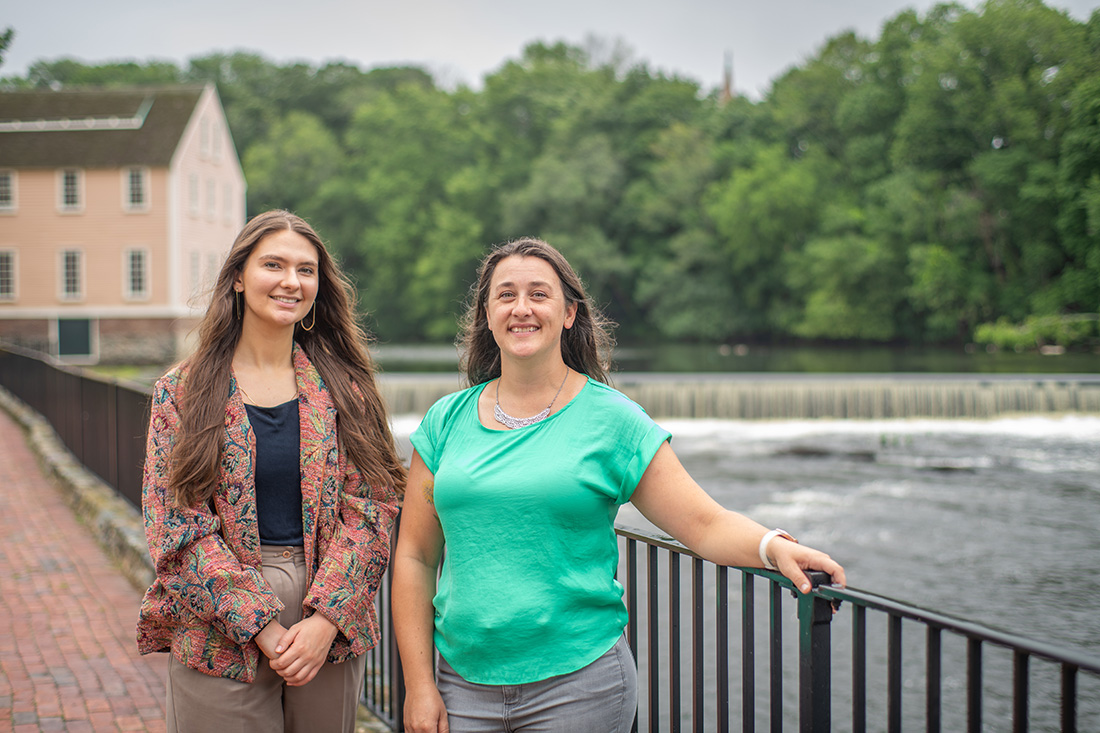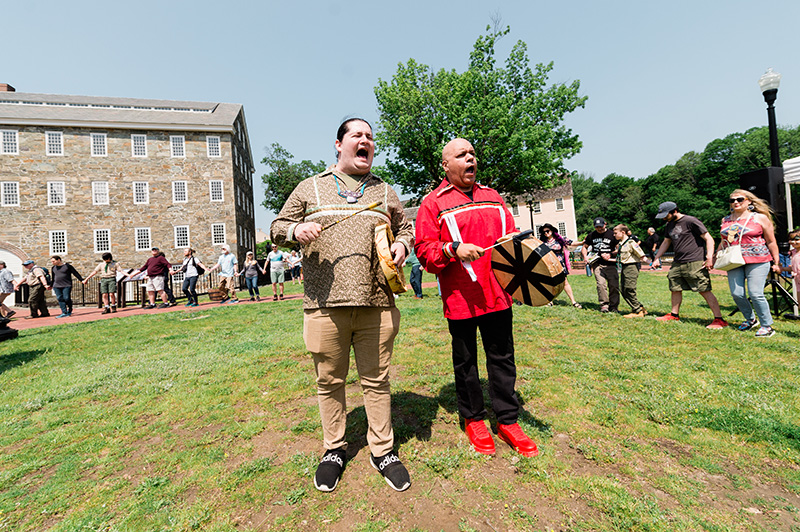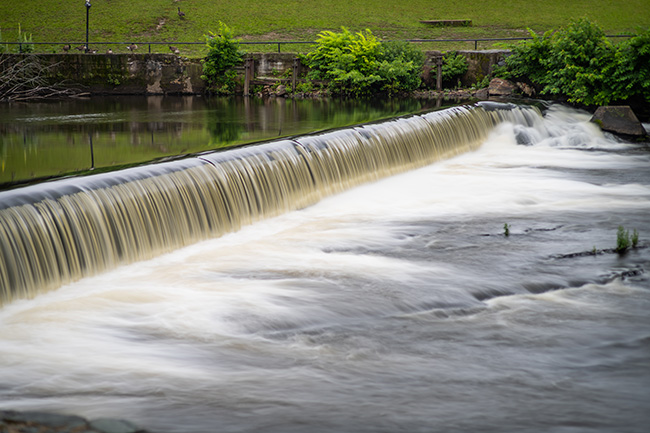‘It’s time to bring them back’

For fish exiting the Blackstone River into Rhode Island’s Narragansett Bay, the journey is one-way. Once they ride the current into the Atlantic, they never return.
In fact, they can’t.
Beginning with the construction of the Slater Mill Dam in Pawtucket, Rhode Island, in 1793, a series of dams installed along the river have prevented countless shad, river herring, alewife, and even salmon — so-called anadromous fish that hatch in fresh water and migrate to the ocean — from returning to spawn and feed within the river’s marshy areas.
“The fish come back every year, but they hit up against the dam, turn around, and leave,” says Stefanie Covino, M.S. ’15, manager of the Blackstone Watershed Collaborative at the George Perkins Marsh Institute.
Facilitating “fish passage” around the Blackstone dams has been a priority for Indigenous tribes and local agencies long involved with the historic waterway, but the scope of interest in the issue is widening. On June 16, U.S. Secretary of the Interior Deb Haaland visited the Blackstone Valley National Historical Park in Pawtucket, Rhode Island, where she met with members of several area tribes, as well as U.S. senators Sheldon Whitehouse and Jack Reed, Governor Daniel McKee, and representatives from the National Park Service and other agencies and community groups, to discuss the conservation of some of the country’s most precious and vulnerable places, like the Blackstone.
According to the Blackstone River Watershed Council/Friends of the Blackstone, returning anadromous fish to the Blackstone would offer substantial ecological benefits to the river watershed and the Narragansett Bay ecosystem by providing a food source for commercial and recreational fish species such as bluefish, striped bass, and pickerel, as well as for predatory birds like waterfowl, wading birds, and osprey. There would be other advantages as well, the group says, including enhanced educational, recreational, and tourist opportunities in the Blackstone River Valley.
Restoring the migrating fish to the Blackstone requires finding ways to help them bypass four of the river’s 19 existing dams that were erected during the Industrial Revolution, and which impede fish from accessing their native spawning grounds. According to Covino, fish ladders have been designed that would allow fish to travel over and around several of the dams. It’s also hoped that one of the dams can be lowered.

Covino, who attended the June 16 meeting, says she and members of the Blackstone River Watershed Council have been working with four distinct Indigenous tribes — the Narragansett, the Hassanamisco band of Nipmuc, the Wampanoag tribe of Gay Head (Aquinnah), and the Mashpee Wampanoag — who have unanimously expressed their support for the fish passage initiatives along the Blackstone. Efforts to promote fish passage have been ongoing for 35 years, she says.
One looming complication involves the proposed siting of a small hydroelectric facility at one of the dams. The local tribes, as well as the Rhode Island Department of Environmental Management, the U.S. Fish and Wildlife Service, and the National Park Service, are united in their opposition and have asked the Federal Energy Regulatory Commission not to grant the license for the facility’s construction, according to Covino.
If hydropower is added to this particular dam, the turbine would be located at the site where fish-passage proponents hope to install a fish ladder. Lowering the state-owned dam, she notes, would be an efficient and cost-effective method for allowing fish to travel downstream, and would help streamline the ability to build the ladder that would aid in upstream travel. Placing a hydro turbine there would delay the ladder’s installation for years due to permitting challenges, she says.
“John Marsland, president of the Blackstone River Watershed Council, and Eric Breitkreutz, superintendent at the Blackstone National Park, have brought the tribes together as partners on this,” Covino says. “Everyone has agreed to the restoration efforts and said, ‘We stand for fish passage.’”

The Narragansett Bay Estuary Program, which provided the seed money to create Covino’s position as Collaborative manager, has asked her to facilitate the fish passage effort, which, in addition to the tribes, involves a host of federal, state, and local government agencies, nonprofits, and consultants.
“We’re getting together a technical steering committee so we can get people into the same room, understand what’s going on, receive updates from attorneys and consultants, and figure out the best way to move forward,” she says. One particular goal is to encourage more public involvement with ongoing initiatives to preserve and improve the Blackstone as an ecological, recreational, and cultural resource.
In May, an intertribal gathering was held to promote the importance of fish passage on the Blackstone — recognizing the value of returning native fish to local waters while celebrating the region’s rich Indigenous heritage. “The original stewards of the land are telling us that these fish have always been an important source of food and culture, and they’ve been absent from this watershed for 200 years,” Covino says. “Now it’s time to bring them back.”



